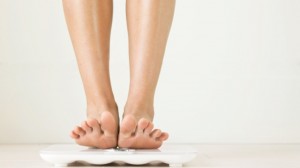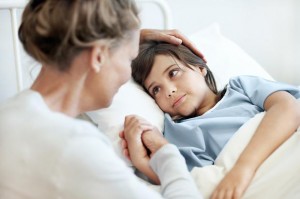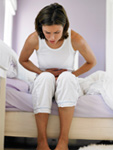 New research proves yet another reason for women to quit smoking: smoking may cause earlier signs of menopause. Heavier smokers may enter menopause up to nine years earlier compared to nonsmokers.
New research proves yet another reason for women to quit smoking: smoking may cause earlier signs of menopause. Heavier smokers may enter menopause up to nine years earlier compared to nonsmokers.
In the United States, the average age for menopause is 51. Previous studies have already showed that smoking can hasten menopause by one to two years, regardless of race or genetic background. New research shows that menopause can happen much quicker specifically in white female smokers who are carriers of two different gene variants.
Over 400 women ages 35 to 47 from the Penn Ovarian Aging Study were compared. Heavy smokers, light smokers, and nonsmokers who were carriers of the CYP3A4*1B variation had an average time-to-menopause of 5.09 years, 11.36 years, and 13.91 years, respectively, after entering the study. This suggests that certain white females with a specific genetic make-up may enter menopause up to nine years earlier than nonsmoking females.
The average time-to-menopause for white carriers of the CYP1B1*3 variation, was 10.41 years, 10.42 years, and 11.08 years among heavy smokers, light smokers, and nonsmokers, respectively. The results were statistically significant but the discrepancies were obviously not as huge as the CYp3A4*1B variant.

 Vulvovaginal atrophy (VVA) or atrophic vaginitis is a medical challenge because it is under-reported by women, under-recognized by health-care providers and, therefore, under-treated according to a new study out of Italy. More or less 50% of postmenopausal women experience vaginal discomfort attributable to VVA. Surveys suggest health-care providers should be proactive in order to help their patients to disclose the symptoms related to VVA and to seek adequate treatment when vaginal discomfort is clinically relevant. Women are poorly aware that VVA is a chronic condition with a significant impact on sexual health and quality of life and that effective and safe treatments may be available. Indeed, female sexual dysfunction and genitourinary conditions are more prevalent in women with VVA. That being so, it is very important to include VVA in the menopause agenda, by encouraging an open and sensible conversation on the topic of intimacy and performing a gynecological pelvic examination, if indicated. According to very recent guidelines for the appropriate management of VVA in clinical practice, it is essential to overcome the vaginal ‘taboo’ in order to optimize elderly women's health care. To learn more about menopause, visit menopause.northwestern.edu or read the full article :
Vulvovaginal atrophy (VVA) or atrophic vaginitis is a medical challenge because it is under-reported by women, under-recognized by health-care providers and, therefore, under-treated according to a new study out of Italy. More or less 50% of postmenopausal women experience vaginal discomfort attributable to VVA. Surveys suggest health-care providers should be proactive in order to help their patients to disclose the symptoms related to VVA and to seek adequate treatment when vaginal discomfort is clinically relevant. Women are poorly aware that VVA is a chronic condition with a significant impact on sexual health and quality of life and that effective and safe treatments may be available. Indeed, female sexual dysfunction and genitourinary conditions are more prevalent in women with VVA. That being so, it is very important to include VVA in the menopause agenda, by encouraging an open and sensible conversation on the topic of intimacy and performing a gynecological pelvic examination, if indicated. According to very recent guidelines for the appropriate management of VVA in clinical practice, it is essential to overcome the vaginal ‘taboo’ in order to optimize elderly women's health care. To learn more about menopause, visit menopause.northwestern.edu or read the full article :  With the recent controversy surrounding Rachel Frederickson’s extreme weight loss on The Biggest Loser, it’s time to shed light on the proper (and safe) way to lose weight. For those unfamiliar with reality television, The Biggest Loser centers around overweight contestants attempting to lose weight to win a cash prize. The winner, whoever loses the highest percentage of weight, is given the title “the Biggest Loser,” along with a cool cash prize of a quarter million dollars. This past season’s winner, Rachel Frederickson, has stirred up much press when she dropped 60% of her bodyweight, going from an original weight of 260 lbs. down to a meager 105 in roughly 7 months—a new record for the show.
With the recent controversy surrounding Rachel Frederickson’s extreme weight loss on The Biggest Loser, it’s time to shed light on the proper (and safe) way to lose weight. For those unfamiliar with reality television, The Biggest Loser centers around overweight contestants attempting to lose weight to win a cash prize. The winner, whoever loses the highest percentage of weight, is given the title “the Biggest Loser,” along with a cool cash prize of a quarter million dollars. This past season’s winner, Rachel Frederickson, has stirred up much press when she dropped 60% of her bodyweight, going from an original weight of 260 lbs. down to a meager 105 in roughly 7 months—a new record for the show. A
A  In the late 1800's there was a growing interest among women in sport, especially cycling, actually leading to some modification in clothing (bloomers!). However, then and even now, there is an undercurrent of discrimination in sport. For example, 19th and 20th century physicians linked athletics to childbirth complications, infertility, mannish characteristics and "heterosexual failure" (lesbianism). In 2009, the International Ski Federation voted against the inclusion of women in the 2010 Winter Olympics because the sport could cause "damage to their uteri or lead to infertility" (what about male fertility?!!). Today, after a 90 year wait, women are allowed to complete in the 90m ski jump.
In the late 1800's there was a growing interest among women in sport, especially cycling, actually leading to some modification in clothing (bloomers!). However, then and even now, there is an undercurrent of discrimination in sport. For example, 19th and 20th century physicians linked athletics to childbirth complications, infertility, mannish characteristics and "heterosexual failure" (lesbianism). In 2009, the International Ski Federation voted against the inclusion of women in the 2010 Winter Olympics because the sport could cause "damage to their uteri or lead to infertility" (what about male fertility?!!). Today, after a 90 year wait, women are allowed to complete in the 90m ski jump. 60 Minutes' Sunday feature
60 Minutes' Sunday feature  Dr. Teresa Woodruff of the Women’s Health Research Institute has been a consistent voice advocating for sex-based research. Recently, Dr. Woodruff consulted with CBS on an upcoming feature to shed light on the importance of sex as a research variable—due to the imbalances between male and female research subjects resulting in inadequate health care for women. In a reaction to the FDA recalling the recommended dosage for women taking Ambien, CBS announced today that their 60 Minutes feature this Sunday will investigate drug dosage differences between men and women. Ambien, a popular sleep drug, was discovered to have adverse effects in women last year. Researchers found that women metabolize Ambien differently than men, which leads to a higher percentage of the drug in the female body. The FDA responded to this incident by halving the previously recommended dosage, just in women.
Dr. Teresa Woodruff of the Women’s Health Research Institute has been a consistent voice advocating for sex-based research. Recently, Dr. Woodruff consulted with CBS on an upcoming feature to shed light on the importance of sex as a research variable—due to the imbalances between male and female research subjects resulting in inadequate health care for women. In a reaction to the FDA recalling the recommended dosage for women taking Ambien, CBS announced today that their 60 Minutes feature this Sunday will investigate drug dosage differences between men and women. Ambien, a popular sleep drug, was discovered to have adverse effects in women last year. Researchers found that women metabolize Ambien differently than men, which leads to a higher percentage of the drug in the female body. The FDA responded to this incident by halving the previously recommended dosage, just in women. The American College of Emergency Physicians recently found an increase in children requiring medical intervention in states that have decriminalized marijuana. The call rate in theses states have increased by more than 30% per year between 2005 and 2011, while the call rate in non-legal states has not changed. There are currently 18 states and the District of Columbia that have passed legislation allowing medical marijuana, including edible products. George Sam Wang, MD, of the Rocky Mountain Poison and Drug Center in Denver states that these edible marijuana products may be the culprits to increased exposure in children. He states “kids can’t distinguish between products that contain marijuana and those that don’t,” and since edible marijuana tends to “contain higher concentrations of the active ingredient, tetrahydrocannabinol,” adverse effects are more likely to result when children ingest these products.
The American College of Emergency Physicians recently found an increase in children requiring medical intervention in states that have decriminalized marijuana. The call rate in theses states have increased by more than 30% per year between 2005 and 2011, while the call rate in non-legal states has not changed. There are currently 18 states and the District of Columbia that have passed legislation allowing medical marijuana, including edible products. George Sam Wang, MD, of the Rocky Mountain Poison and Drug Center in Denver states that these edible marijuana products may be the culprits to increased exposure in children. He states “kids can’t distinguish between products that contain marijuana and those that don’t,” and since edible marijuana tends to “contain higher concentrations of the active ingredient, tetrahydrocannabinol,” adverse effects are more likely to result when children ingest these products. If you live in a northern climate, winter increases your risk of the flu, head colds, and respiratory illnesses. These are somewhat expected. But winter also brings some less considered infections that you may get if you are lucky enough to go on a winter vacation in a warm climate. For example:
If you live in a northern climate, winter increases your risk of the flu, head colds, and respiratory illnesses. These are somewhat expected. But winter also brings some less considered infections that you may get if you are lucky enough to go on a winter vacation in a warm climate. For example:  New long-term research shows that hot flashes continue, on average, for five years after menopause. More than a third of women can experience hot flashes for up to ten or more years after menopause.
New long-term research shows that hot flashes continue, on average, for five years after menopause. More than a third of women can experience hot flashes for up to ten or more years after menopause.